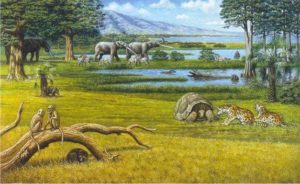by de la Vega et al., 2020 in Nature OPEN ACCESS
Abstract
The Piacenzian stage of the Pliocene (2.6 to 3.6 Ma) is the most recent past interval of sustained global warmth with mean global temperatures markedly higher (by ~2–3 °C) than today. Quantifying CO2 levels during the mid-Piacenzian Warm Period (mPWP) provides a means, therefore, to deepen our understanding of Earth System behaviour in a warm climate state. Here we present a new high-resolution record of atmospheric CO2 using the δ11B-pH proxy from 3.35 to 3.15 million years ago (Ma) at a temporal resolution of 1 sample per 3–6 thousand years (kyrs). Our study interval covers both the coolest marine isotope stage of the mPWP, M2 (~3.3 Ma) and the transition into its warmest phase including interglacial KM5c (centered on ~3.205 Ma) which has a similar orbital configuration to present. We find that CO2 ranged from 389+38−8389−8+38ppm to 331+13−11,331−11+13,ppm, with CO2 during the KM5c interglacial being 371+32−29371−29+32ppm (at 95% confidence). Our findings corroborate the idea that changes in atmospheric CO2 levels played a distinct role in climate variability during the mPWP. They also facilitate ongoing data-model comparisons and suggest that, at present rates of human emissions, there will be more CO2 in Earth’s atmosphere by 2025 than at any time in at least the last 3.3 million years.
…

